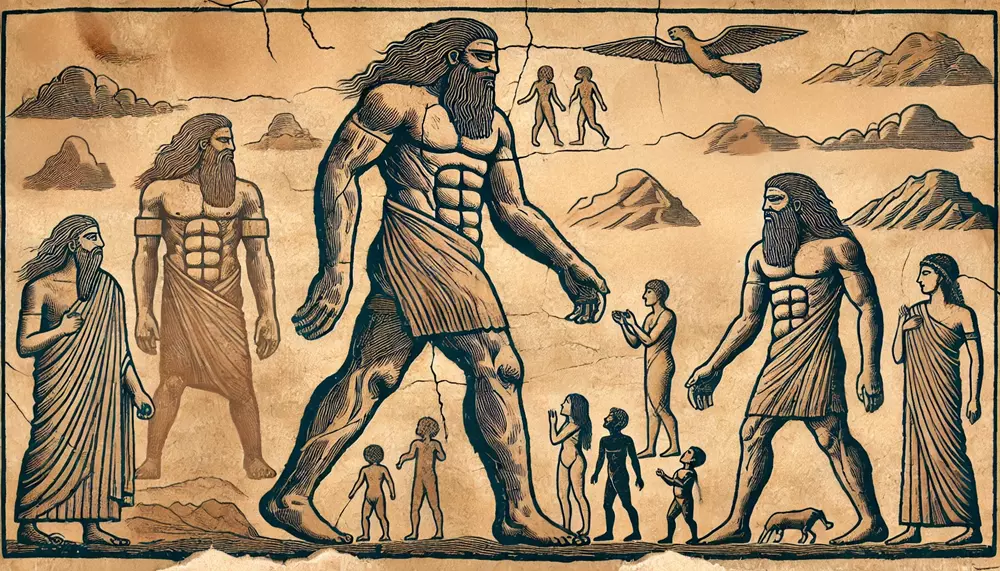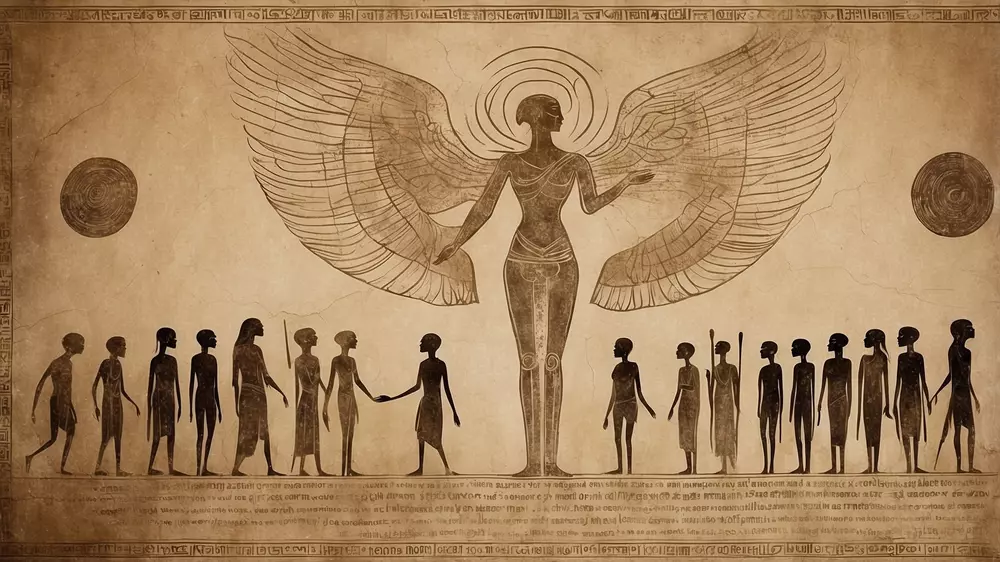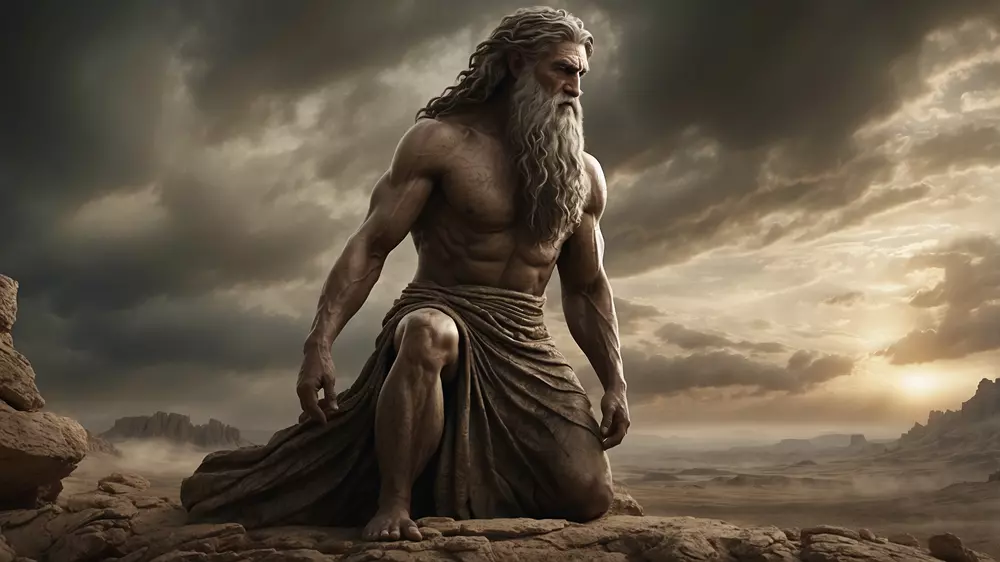Introduction
The Nephilim are a mysterious and enigmatic group of beings mentioned primarily in the Hebrew Bible, specifically in the Book of Genesis, and referenced in other ancient Jewish texts like the Book of Enoch and Book of Jubilees. Their appearance, nature, and role in ancient mythological and religious traditions have been a subject of debate among scholars and theologians for millennia. Below, we will explore their origins, mythological background, cultural significance, and modern representations.
Summary
The Nephilim are often depicted as the offspring of the “sons of God” and the “daughters of men,” as mentioned in Genesis 6:1-4. Their ambiguous nature has led to various interpretations: some view them as giants, while others believe them to be fallen angels or demigods. In the Book of Enoch, they are tied to the Watchers, angels who descended to earth and corrupted humanity by mating with women. The Nephilim are described as a hybrid race possessing great strength and size, and they are often linked to the corruption and wickedness that led to the Great Flood.
In Jewish apocalyptic literature, the Nephilim are often portrayed as antagonistic forces, beings that defy divine order, leading to their destruction. Yet, they remain figures of fascination due to their liminal nature—existing between the divine and the mortal realms. In modern culture, the Nephilim continue to appear in literature, films, and even video games, often depicted as powerful, fallen entities or as tragic figures doomed by their hybrid origins.
History/Origin
The earliest mention of the Nephilim appears in the Book of Genesis:
“The Nephilim were on the earth in those days—and also afterward—when the sons of God went to the daughters of humans and had children by them. They were the heroes of old, men of renown.” (Genesis 6:4, NIV)
This passage situates the Nephilim in a pre-flood world, where divine beings (“sons of God”) intermarried with human women, resulting in the birth of these mighty, often giant-like creatures. The Nephilim, according to the Hebrew Bible, were a part of the corruption and violence that led God to decide to destroy the world with the Flood.

In the Book of Enoch, the Nephilim are given a more detailed backstory. Enoch describes the fall of the Watchers—angels who were sent to watch over humanity but instead succumbed to lust. Their union with human women gave birth to the Nephilim, who are described as giants with an insatiable appetite for destruction. 1 Enoch 7:2 states:
“And they [the Watchers] became pregnant, and they bare great giants, whose height was three thousand ells.”
These giants are later condemned by God, and the archangels are sent to bind the leaders of the Watchers. The Nephilim, being part human and part divine, are not only enormous in size but also corrupt, playing a central role in the spread of evil across the earth.
In post-biblical Jewish texts, such as the Book of Jubilees, the Nephilim are further associated with the spirits of the dead giants, who are said to haunt the earth as evil spirits, influencing humanity toward sin.
Name Meaning
The term Nephilim derives from the Hebrew root npl (נָפַל), which means “to fall” or “fallen ones.” This etymology has led some scholars to interpret the Nephilim as “fallen angels” or beings cast down from heaven. However, it is also possible that the name simply refers to their immense stature and power, suggesting they were “those who fell upon” their enemies with overwhelming force.
In other ancient texts, like the Septuagint, the Nephilim are translated as Gigantes, meaning “giants,” reinforcing the interpretation that they were of great size and strength. However, the term’s ambiguity leaves room for multiple interpretations, including the possibility that they were both fallen in nature and immense in physical stature.
Background Story
One of the central myths surrounding the Nephilim revolves around their role in the moral decay of the pre-flood world. The intermarriage between the “sons of God” and the “daughters of men” is described as an abomination, resulting in hybrid offspring who defied both human and divine order.
The Book of Enoch expands on this, explaining that the Watchers, the angels who fathered the Nephilim, also taught humanity forbidden knowledge. This included secrets of war, weapon-making, and sorcery. The Nephilim, with their superhuman abilities, used this knowledge to dominate and corrupt the earth, leading to widespread violence. Their actions became so vile that God decided to cleanse the world through the Flood:
“And when they were perishing and their children [the Nephilim] were slain, they made a request that their fathers should make supplication for them. But they could not do so, and they were destroyed.” (1 Enoch 10:12)
The Nephilim, along with the Watchers, were ultimately destroyed in the flood, but their legacy of chaos and destruction continued to haunt post-flood humanity through the spirits of the dead giants, which were believed to cause mischief and sin.
Cultural Impact
The Nephilim have had a profound impact on various cultural and religious traditions. In Jewish apocalyptic literature, their existence is often cited as one of the primary reasons for the flood, representing the dangers of crossing the boundaries between divine and human realms. The Nephilim serve as a cautionary tale about the consequences of hubris and the corruption of divine gifts.
In Christianity, the Nephilim are sometimes interpreted as fallen angels or demons. The Book of Revelation alludes to the return of the Nephilim during the end times, reinforcing their association with chaos and the undoing of divine order.
In Jewish folklore, particularly in Kabbalistic traditions, the spirits of the Nephilim are sometimes viewed as rebellious entities that continue to influence human affairs, often associated with malevolent forces or destructive spiritual influences.
In modern occult and esoteric traditions, the Nephilim are often depicted as symbols of forbidden knowledge, the blending of mortal and divine, and the dangers of transgressing natural boundaries. They appear in ritualistic practices as entities that represent the darker aspects of spiritual ascent or fall.
Religion/Ritual
The Nephilim do not feature prominently in formal religious rituals in Judaism or Christianity, but they are frequently invoked in theological discussions about the nature of sin, angels, and the boundaries between the divine and human realms. In some Kabbalistic teachings, the Nephilim are seen as a metaphor for spiritual imbalance, a warning against the pursuit of power without wisdom.
There are no direct references to rituals dedicated to the Nephilim, but their story serves as a symbolic reference in prayers and liturgies that address themes of divine justice and the consequences of moral and spiritual transgressions.
Scientific or Rational Explanations
Scholars and historians have long debated the origins of the Nephilim and whether they can be explained through natural or historical phenomena. Some theories suggest that the Nephilim might be a reflection of ancient giantism—a condition caused by pituitary disorders, leading to individuals of extraordinary height.
Others propose that the Nephilim could have been legendary accounts of ancient warrior tribes who were larger or more powerful than average humans, such as the Anakim or Rephaim mentioned elsewhere in the Bible.
Another theory is that the Nephilim are symbolic representations of the moral decay and arrogance of ancient civilizations, embodying the dangers of hubris and the mixing of divine and human realms.
In Modern Culture
The Nephilim have become a popular subject in modern media, appearing in books, films, and video games. One of the most well-known modern references is in John Milton’s Paradise Lost, where Satan’s rebellion mirrors the story of the fallen angels, often interpreted as the Watchers.
The Nephilim also appear in popular fantasy novels such as Cassandra Clare’s The Mortal Instruments series, where they are portrayed as part-human, part-angel hybrids tasked with protecting the world from demons.
In video games, such as Darksiders and Diablo, the Nephilim are depicted as powerful warrior beings, often with supernatural abilities, emphasizing their hybrid nature and their struggle between good and evil.
In conclusion, the Nephilim remain one of the most intriguing figures in ancient mythology, representing the crossing of boundaries between the divine and human, the consequences of corruption, and the enduring fascination with forbidden knowledge. Their legacy continues to inspire both scholarly debate and creative reinterpretation, cementing their place in both ancient and modern narratives.









